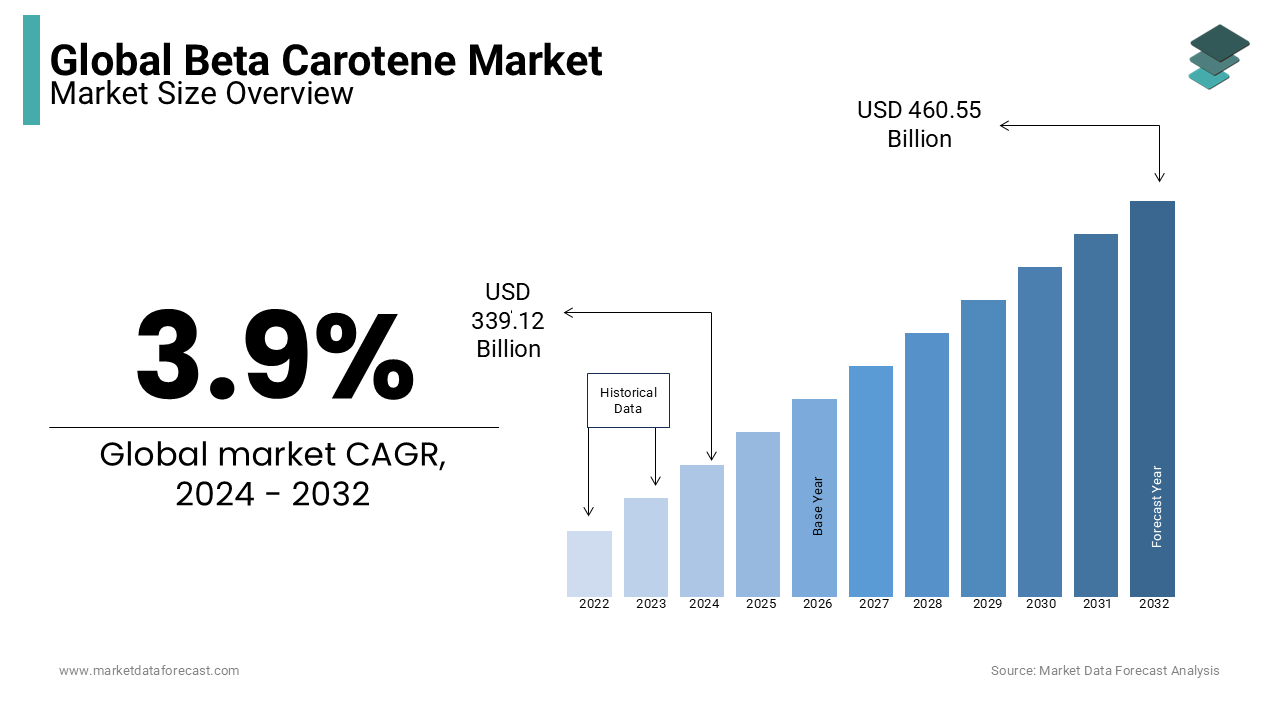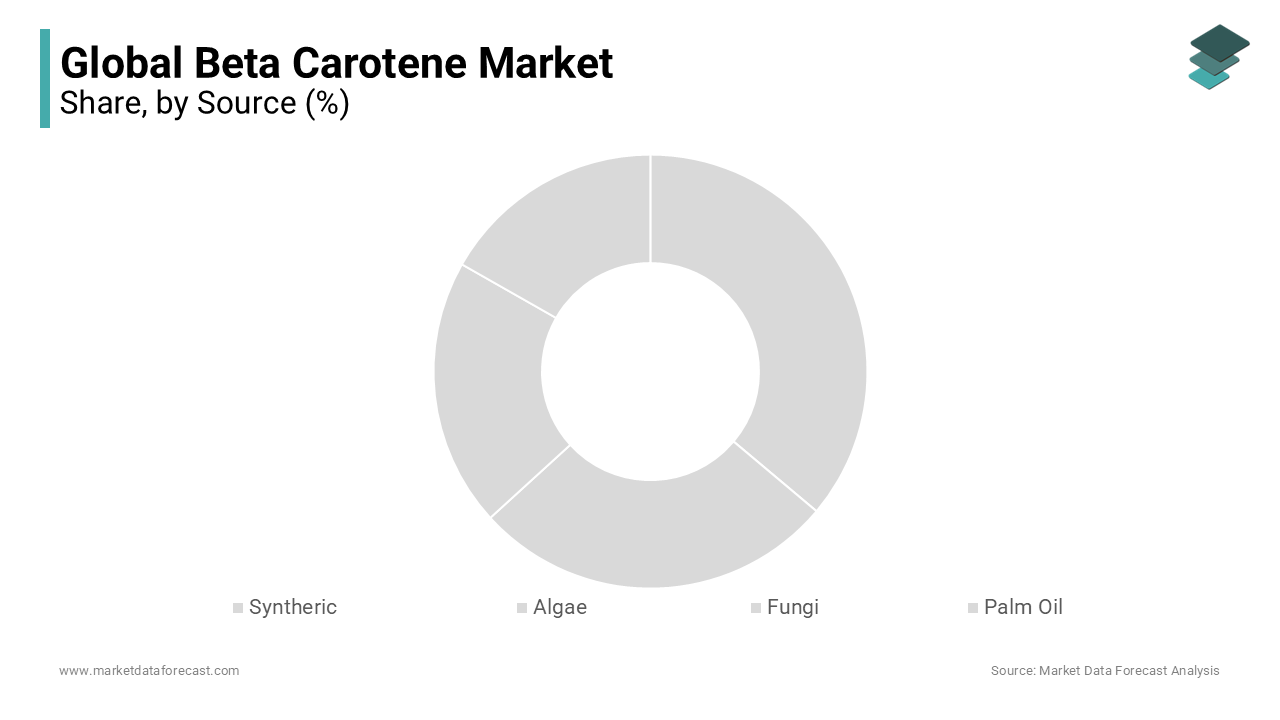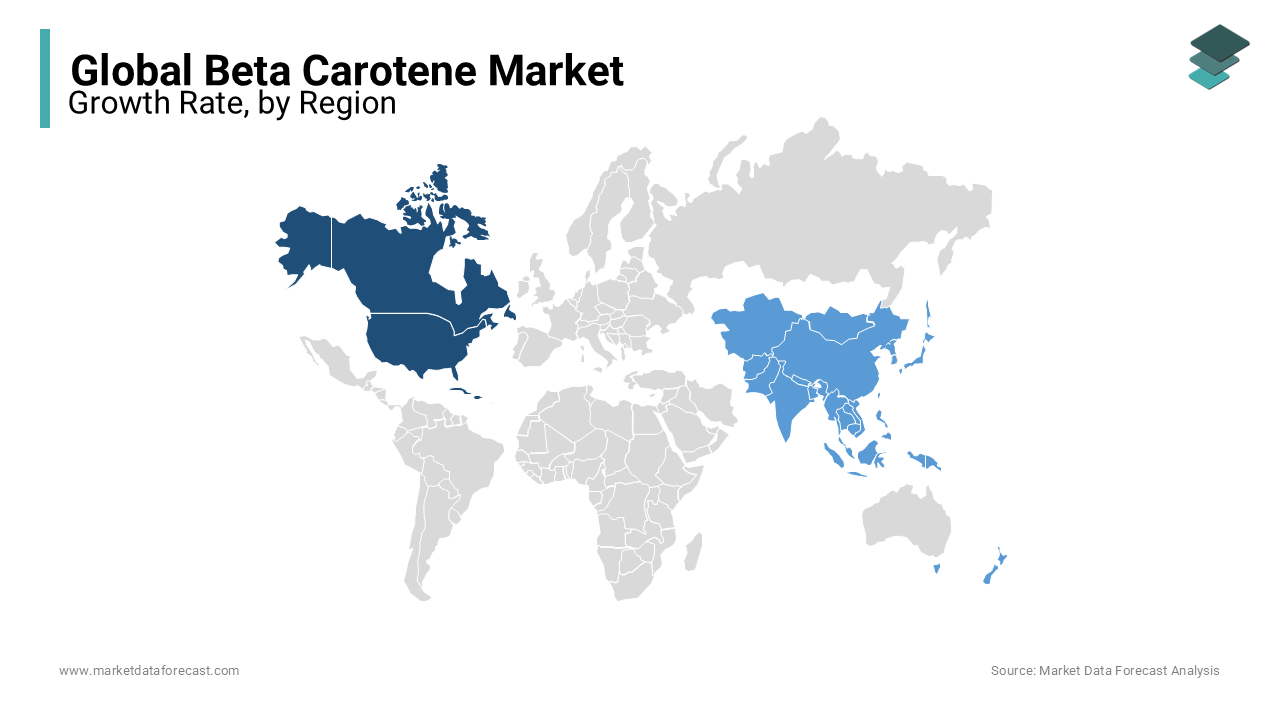Global Beta Carotene Market Size, Share, Trends & Growth Forecast Report – Segmented By Application (Pharmaceuticals, Dietary Supplements, Food & Beverage, Animal Feed, Others), Source (Syntheric, Algae, Fungi, Palm Oil, Others), And Region (North America, Europe, Asia Pacific, Latin America, And Middle East & Africa) - Industry Analysis (2025 To 2033)
Global Beta Carotene Market Size
The global beta carotene market size was worth US$ 339.12 billion in 2024, and is anticipated to be worth USD 478.52 billion by 2033 from USD 352.35 billion In 2025, growing at a CAGR of 3.90% during the forecast period.. The growing demand for naturally-derived products in the food and beverage and dietary supplement industries is expected to be a significant driving force in the global market.

Beta-carotene is a natural chemical that is responsible for the red-yellow color in various plants. Beta carotene, a natural pigment, is adopted as a food coloring in various food processing industries such as beverages, confectionery, packaged food, etc. Beta carotene is supplied in bulk from plant, animal, and microbial sources to meet the demand for colorants in various end-use industries. Beta-carotene is rich in antioxidant nutrients, and in recent years there has been an increasing demand for pharmaceuticals and dietary supplements. It is natural retinol, so it is converted to vitamin A during digestion. As a functional component of food and combined processing, there is an increasing demand for beta-carotene in food processing. Beta-carotene is also applied to natural and synthetic cosmetics due to its high concentration of antioxidants and vitamin A. Due to the expansion of applications and the increase in demand, the beta-carotene market is supposed to increase in value and volume during the forecast period. An aging population and an increase in chronic lifestyle-related diseases help to increase demand for beta-carotene-containing foods and dietary supplements.
MARKET DRIVERS
The demand for these ingredients in food, feed, and personal care products has skyrocketed as consumer awareness of beta-carotene and antioxidants protect against cancer, aging, and other health benefits.
The industry is presumed to witness incredible growth in the next eight years. The tremendous rise in the adoption of beta-carotene in sectors like food and beverage, personal care, cosmetics, animal feed, dietary supplements, and others is likely to promote the business in the coming years. The increasing demand for natural crude carotene products is suspected to accelerate global industrial growth. As the use of beta-carotene to develop natural colors in various foods and beverages has increased, it has become popular with consumers in recent years.
Beta-carotene, along with food and beverages, is gaining considerable attention in dietary supplements as consumer interest in natural and vitamin-mineral-rich supplements increases. As consumer demand for organic and natural cosmetics has increased, manufacturers and product developers have started using beta-carotene as a critical ingredient in many cosmetic and personal care products. However, natural beta-carotene has recently been introduced into organic cosmetics. This is presumed to launch new products with natural ingredients such as beta-carotene, which are anticipated to drive growth in the global beta-carotene market during the outlook period. In Europe, beta-carotene is the most preferred dye in the food processing industry. Beta-carotene is widely used in the food processing industry as a source of natural colors that provide various shades of red, yellow, and orange. The food processing industry has adopted beta-carotene as a standard colorant for a variety of products such as challenges, dressings, and other food products as demand for natural ingredients and additives increases. Therefore, increasing consumer awareness of the health benefits of natural color sources like beta carotene in recent years is one of the main drivers of the global beta-carotene market.
As an organic compound, beta-carotene is most applied in drug development and pharmaceutical processing of carriers. Additionally, beta-carotene is rich in antioxidant nutrients that treat oxidative stress and improve cognitive function. The demand for beta-carotene has increased significantly between drug development and drug manufacturers over the past decade. Therefore, the pharmaceutical consumption of beta-carotene is one of the main driving forces driving the growth of the global beta-carotene market size.
MARKET RESTRAINTS
Overuse of these products over a long period has a number of side effects that can cause stool loss, bruising, and joint pain and make the skin orange or yellow.
Several studies have shown that taking long-term high-dose supplements can increase the risk of certain types of cancer. Smokers who take these supplements increase their risk of colon, prostate, and lung cancer.
REPORT COVERAGE
|
REPORT METRIC |
DETAILS |
|
Market Size Available |
2024 to 2033 |
|
Base Year |
2024 |
|
Forecast Period |
2025 to 2033 |
|
CAGR |
3.9% |
|
Segments Covered |
By Source, Application, And Region |
|
Various Analyses Covered |
Global, Regional and Country Level Analysis; Segment-Level Analysis; DROC; PESTLE Analysis; Porter’s Five Forces Analysis; Competitive Landscape; Analyst Overview of Investment Opportunities |
|
Regions Covered |
North America, Europe, APAC, Latin America, Middle East & Africa |
|
Market Leaders Profiled |
DSM N.V., BASF SE, CHR Hansen Holding A/S, Foodchem International Corporation, Flavorchem Corporation, Lycored, D.D. Williamson & Co., Inc, BioExtract, Nutralliance, and Zhejiang Medicine Co., Ltd |
SEGMENTAL ANALYSIS
Global Beta Carotene Market Analysis By Source

The Algae segment is leading with the dominant share of the market. This source of kind is top-rated in research institutes that synthesize a variety of beta-carotene accordingly. It is a rich source of vitamin A, which is essential for improving immunity. In both biotechnology and academic institutes, the demand for algae sources is very high accordingly. The growing use of beta carotene in manufacturing dietary supplements is attributed to being a major factor that has prompted the growth rate of the market. According to a Food Supplements Europe (FSE) survey report, more than 93% of Europeans will be taking dietary supplements in 2023. This demand for dietary supplements is directly emphasizing the growth rate of the market. In recent times, the demand for natural source materials has attracted huge attention from consumers, which is additionally fueling the growth rate of the market.
The synthetic segment is expected to have a prominent growth rate in the coming years. Synthetic beta carotene is produced through a chemical process in the laboratory that has the same benefits as a natural source. Difficulty in the availability of natural resources is augmented by the rising need for the use of synthetic products that are solely elevating the growth rate of this segment.
Global Beta Carotene Market Analysis By Application
The pharmaceuticals segment has a prominent share of the market, whereas the food & beverage segment is attributed to have the highest CAGR by the end of the forecast period. The growing prevalence of various chronic diseases across the world is one of the major factors that will cause the market to grow extensively. The demand to launch innovative dietary supplements and other drugs using beta carotene is ascribed to bolster the growth rate of the market.
The naturally derived beta carotene is prominent in the food and beverage industry. It has natural coloring properties, which are primarily important, rather than any artificial coloring agents. People now prefer naturally derived ingredients, which is solely expanding the market’s growth rate.
Researchers have gained more attention on using beta carotene in animal feed. This is one of the important aspects for dairy and beef cows that improves oxidative stress and further helps them to fight against many diseases. The rising speculations for powerful antioxidants for animals are quietly anticipated to level up the growth rate of the market
REGIONAL ANALYSIS

Globally, North America is anticipated to occupy Europe after most of the global beta-carotene market. In the North American beta-carotene market, the United States is supposed to account for the dominant share in the overall revenue, followed by Canada. Increased health awareness among consumers is supposed to fuel the growth of beta-carotene in the region. In Europe, Germany and France are likely to occupy a significant share of the beta-carotene market during the forecast period. Europe had become a significant consumer and accounted for more than 35% of world demand in 2015, and the region is experiencing the presence of many producers and consumers of products with the latest technology. Europe is expected to show the same growth trend in the future.
In contrast, the Asia Pacific region is foreseen to post healthy growth by 2020. In the Asia Pacific region, China and Japan are expected to be the main contributors to the global beta-carotene market. The increased use of cosmetics in the area is presumed to support the growth of the beta-carotene market in the region. The Asia Pacific region is expected to witness the fastest growth during the projection period. Growth may be the result of a significant increase in the region's food and beverage, cosmetics, and other end-user industries. The presence of small regional players and investments in R&D activities to develop new products are anticipated to have a positive impact on industrial growth.
KEY PLAYERS IN THE GLOBAL BETA CAROTENE MARKET
Major Key Players in the Global Beta beta-carotene market are DSM N.V., BASF SE, CHR Hansen Holding A/S, Foodchem International Corporation, Flavorchem Corporation, Lycored, D.D. Williamson & Co., Inc, BioExtract, Nutralliance, and Zhejiang Medicine Co., Ltd
RECENT HAPPENINGS IN THE MARKET
- BASF SE introduced Lucarotin 10 CWD/O Plus in 2017, which comprises about 10% beta-carotene powder.
- Evolva will sign a distribution agreement with Veri-te ™ Resveratrol in North America for B & D nutritional ingredients to allow natural beta-carotene to be applied to the food and beverage and dietary supplement industries in the United States.
- GacLife has launched the world's first line of Gac-based wellness products with vision and skincare capabilities. Gac fruit is a fruit found in some areas of Southeast Asia and consists of high concentrations of carotenoids, antioxidants, and other nutrients.
- DSM acquired Vitatene, a beta-carotene producer from primary fermentation. This allowed us to strengthen the company's market position further.
DETAILED SEGMENTATION OF GLOBAL BETA CAROTENE MARKET INCLUDED IN THIS REPORT
This research report on the global beta carotene market has been segmented and sub-segmented based on source, application, & region.
By Source
- Syntheric
- Algae
- Fungi
- Palm Oil
By Application
- Pharmaceuticals
- Dietary Supplements
- Food & Beverage
- Animal Feed
By Region
- North America
- Europe
- Asia Pacific
- Latin America
- Middle East and Africa
Frequently Asked Questions
1. What are the key factors driving the growth of the beta carotene market?
Factors such as increasing awareness about health benefits, rising demand for natural food colorants, and growth in the cosmetics and personal care industry are driving the growth of the beta-carotene market.
2. What are the health benefits associated with beta carotene?
Beta carotene is known for its antioxidant properties, which help protect cells from damage caused by free radicals. It's also essential for vision health and immune function, as it is a precursor to vitamin A.
3. What are the future trends expected in the beta carotene market?
Future trends in the beta carotene market may include a focus on sustainable sourcing of natural beta carotene, increased R&D for new applications, and expansion in emerging markets with growing health awareness.
Related Reports
Access the study in MULTIPLE FORMATS
Purchase options starting from
$ 2500
Didn’t find what you’re looking for?
TALK TO OUR ANALYST TEAM
Need something within your budget?
NO WORRIES! WE GOT YOU COVERED!
Call us on: +1 888 702 9696 (U.S Toll Free)
Write to us: sales@marketdataforecast.com